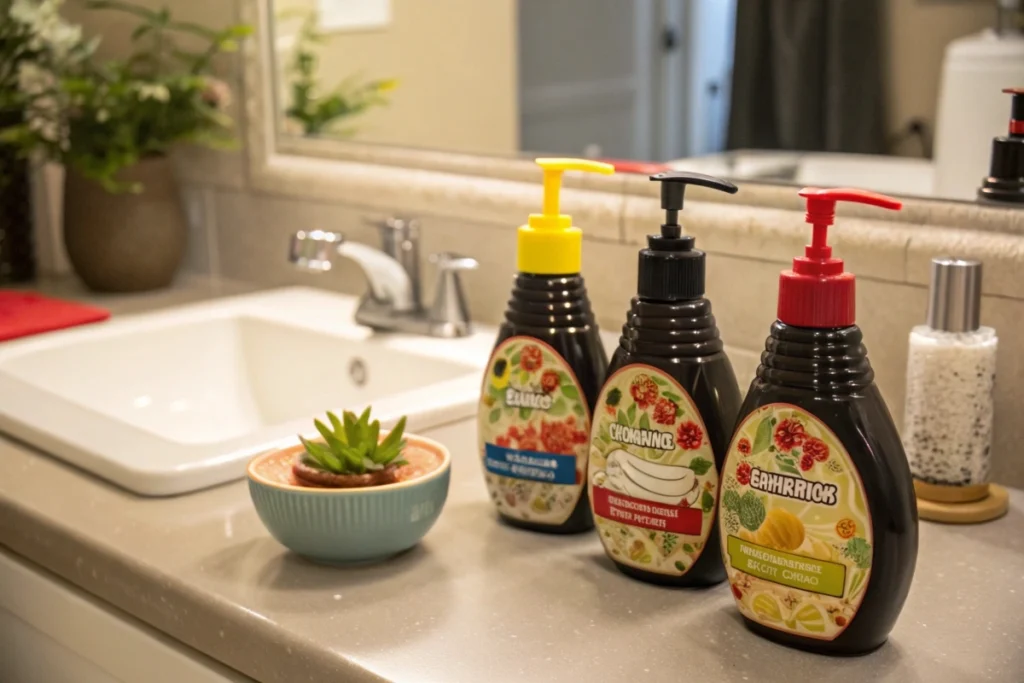Introduction
If you’ve ever scrolled through social media and spotted a japanese fake food shampoo bottle shaped like soy sauce or miso soup, you’re not alone in your curiosity. These novelty items have recently seen a surge in popularity, bridging the gap between playful design and Japan’s deep-rooted tradition of crafting hyper-realistic fake food japanese replicas (often referred to as sampuru). While it may sound like a mere gimmick to put shampoo in a bottle that mimics, say, a ramen bowl or sushi roll, these products actually highlight a broader fascination with japan fake food display culture—one that enthralls collectors, travelers, and everyday consumers.
The concept of using hyper-realistic replicas in daily items has expanded well beyond restaurant window displays. From fake food japanese keychains to entire lines of novelty hair-care products, you’ll find creative examples that meld function with whimsical aesthetics. If you’re wondering how shampoo shaped like a soy sauce container or a fruit parfait became a sought-after item, this guide will walk you through everything: the cultural background, how these items are made, where to find them, and why they matter—especially for fans of Japanese pop culture.
For those looking to dive deeper into the universe of novelty crafts, fake-food-japanese-kits further explores DIY sets and candy kits that reflect Japan’s passion for all things kawaii. In this article, we’ll focus on japanese fake food shampoo and other intriguing facets of replication culture, detailing how these playful products came to captivate global imagination.
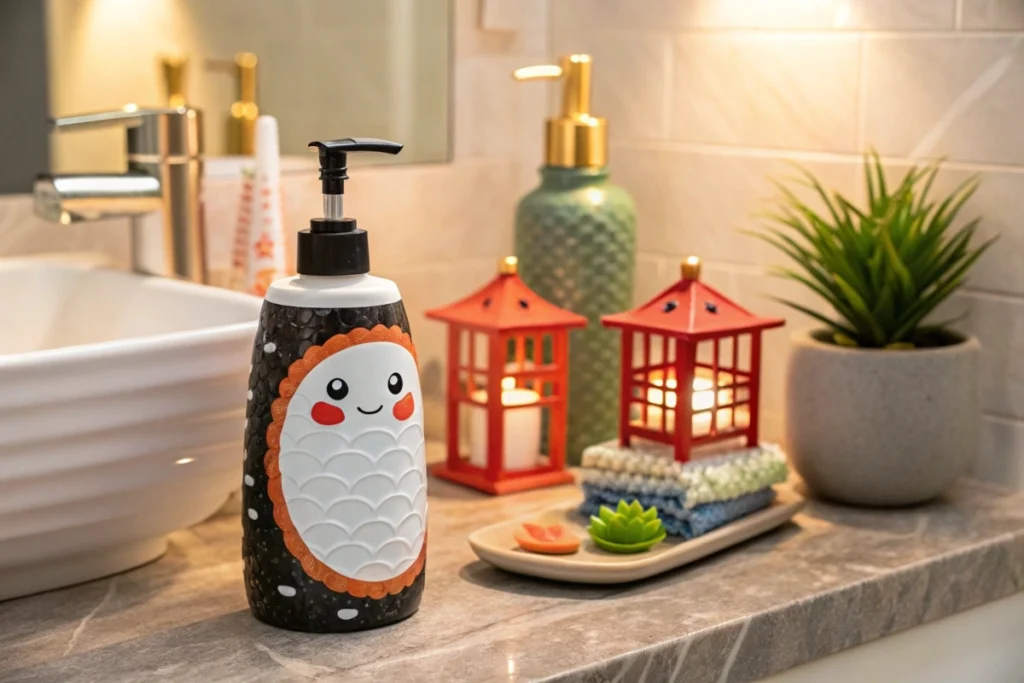
What Exactly Is Japanese Fake Food Shampoo?
While the idea of shampoo resembling a bowl of miso soup or a soy sauce bottle might sound bizarre, japanese fake food shampoo stems from the broader fake food japanese trend. Traditional sampuru artisans have honed their craft to produce near-identical replicas of dishes for japan fake food display—commonly seen in restaurant windows. Over time, this artistry merged with everyday products, offering shower gels, lotions, or conditioners shaped like iconic Japanese meals or condiments.
Why Shampoo Bottles?
- Everyday Novelty: Turning a mundane item into a conversation piece is part of Japanese novelty culture. A shampoo dispenser that looks like a ramen bowl instantly stands out.
- Cultural Quirk: In a society that often values kawaii (cuteness) and creativity, merging everyday tasks with playful design resonates widely.
- Marketing & Collectibles: Brands see novelty packaging as a way to engage consumers. Collectors might buy multiple bottles to complete a set featuring sushi, soy sauce, or fruit parfait designs.
These items usually come in two formats:
- Fully Functional Bottles: Pre-filled shampoo or soap with novelty exteriors.
- Empty Refillable Containers: Letting you add your own preferred product while enjoying the exterior design.
For those drawn to unique household items, it’s akin to mixing practicality with the joy of a japanese party food vibe—just in the bathroom instead of on a dinner table. The concept also echoes american fake japan food, where Western brands adopt Japanese-inspired novelty but with an American twist, showing the global appeal of these whimsical creations.
Delving Into the Broader Fake Food Culture
Fake food japanese products include more than shampoo bottles. The overarching concept—sampuru—traces back to early 20th-century Japan, where restaurants needed lifelike displays to advertise dishes. Over time, that skill set led to crafting everything from plastic sushi magnets to comedic cell phone cases shaped like tempura. Japanese fake food shampoo is just the latest iteration, capitalizing on a fascination for near-perfect replicas of everyday foods.
Candy Kits and Collectibles
If you’ve explored the comedic side of fake food japanese culture, you might have encountered candy-making kits or plastic replicas. While shampoo shaped like soy sauce is eye-catching, these candy kits let you craft tiny burger sets or fruit tarts from flavored powders—another playful twist. By comparison, something like japanese-chicken-fried-rice-recipe- represents the real counterpart, bridging the gap between whimsical imitation and authentic cooking.
Why People Buy Into It
- Gift Appeal: Few products spark conversation like a bubble bath labeled with a “teriyaki sauce” facade. These items make memorable gifts for birthdays or themed parties.
- Instagram & Viral Culture: Social media users love posting images of quirky, kawaii items. A japanese fake food shampoo bottle fits that niche perfectly, racking up likes.
- Collectibility: Some lines produce limited editions (e.g., holiday-themed designs), prompting collectors to chase the complete series.
Intersection with Traditional Artistry
It’s easy to dismiss these novelty items as purely for laughs. Yet, the artistry behind sculpting or painting these containers often relies on the same detailed approach sampuru artisans use for high-end restaurant displays. The plastic “lettuce leaves” or “miso soup surface” might require skilled painting to replicate real colors and textures. This dedication preserves a piece of cultural craftsmanship, albeit applied to soap or shampoo packaging.
Overall, japanese fake food shampoo isn’t just kitsch. It’s a playful extension of an age-old tradition that merges practical household goods with the flair of japan fake food display. Such items highlight Japan’s continual innovation in design and marketing—a synergy of function, aesthetics, and cultural heritage.
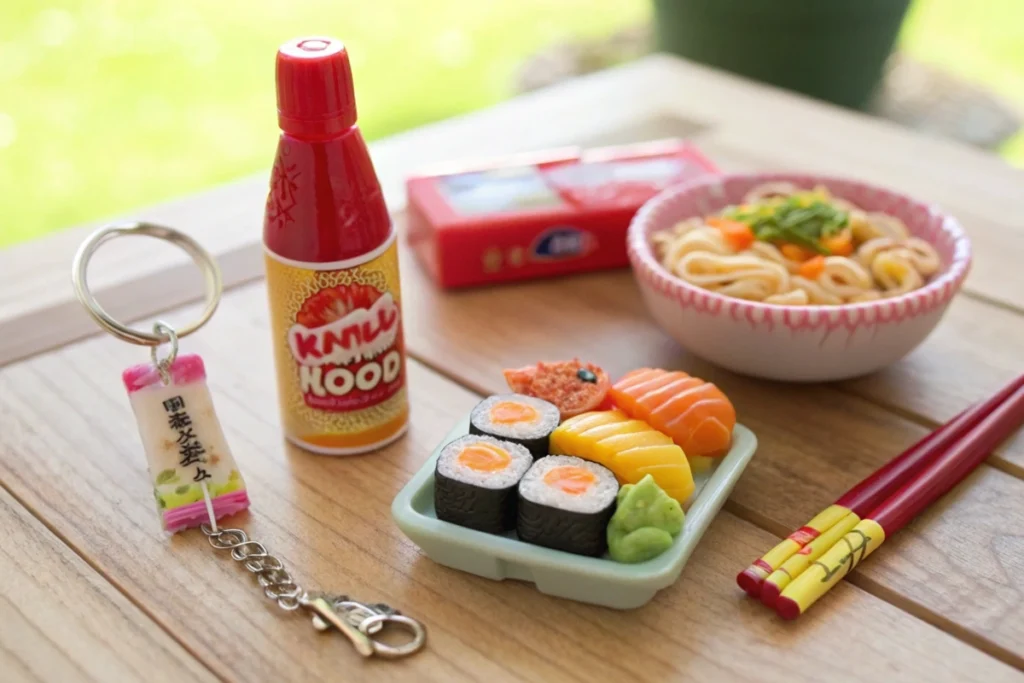
A Consumer’s Guide: Finding & Evaluating Japanese Fake Food Shampoo
If you’re ready to buy japanese fake food shampoo, the question is where to look and how to determine which items are quality versus mere gimmicks. Options range from local novelty shops to online marketplaces like eBay or Amazon. Some even appear in specialized Japanese import stores.
Trusted Brands and Sellers
- Local Japanese Hobby Stores: Larger cities often have Japanese markets or anime-themed shops carrying novelty items.
- Online Marketplaces: A quick search for japanese fake food shampoo might reveal sellers offering direct imports. Always check seller ratings, reviews, and shipping details—especially for overseas deliveries.
Evaluating Authenticity
Some unscrupulous retailers might sell poorly made knockoffs with subpar designs or questionable plastic quality. Look for brand labeling (like well-known Popin’ Cookin’ or recognized gift item manufacturers) or unique packaging indicating it’s more than a random novelty. If you see suspiciously low prices or misspelled brand names, proceed cautiously.
Quality Indicators
- Material Durability: Sturdy plastic or silicone ensures the container lasts multiple refills.
- Fine Detailing: A realistic “seaweed” texture or meticulously painted “soy sauce” color indicates skilled craftsmanship.
- Functional Pump/Nozzle: The item’s comedic design shouldn’t hamper usability. Confirm it dispenses shampoo or soap smoothly.
- Water-Resistant Labels: If the entire design is a sticker, it might peel quickly in a moist environment. Painted or molded details generally hold up better.
Price Range & Rarity
Most japanese fake food shampoo containers are relatively affordable—ranging from $10 to $30. However, limited-edition collaborations or items from official merch lines can fetch higher prices. If you stumble upon a unique design, consider snagging it before it disappears, as these niche items often come in small production batches.
Shipping & Storage
For overseas purchases, shipping times may vary—some items take weeks. Once it arrives, treat it like any regular shampoo container, though you might want to rinse thoroughly before your first use. If it’s a collectible, store in a cool, dry place to prevent color fading.
If you’re a DIY enthusiast, you could even adapt these items by adding custom labels or pairing them with a matching japanese-scallop-recipe(https://thejapaneserecipes.com/japanese-scallop-recipe/) for a themed dinner party. The synergy of aesthetic humor and real Japanese culinary culture can create memorable experiences for you and your guests.
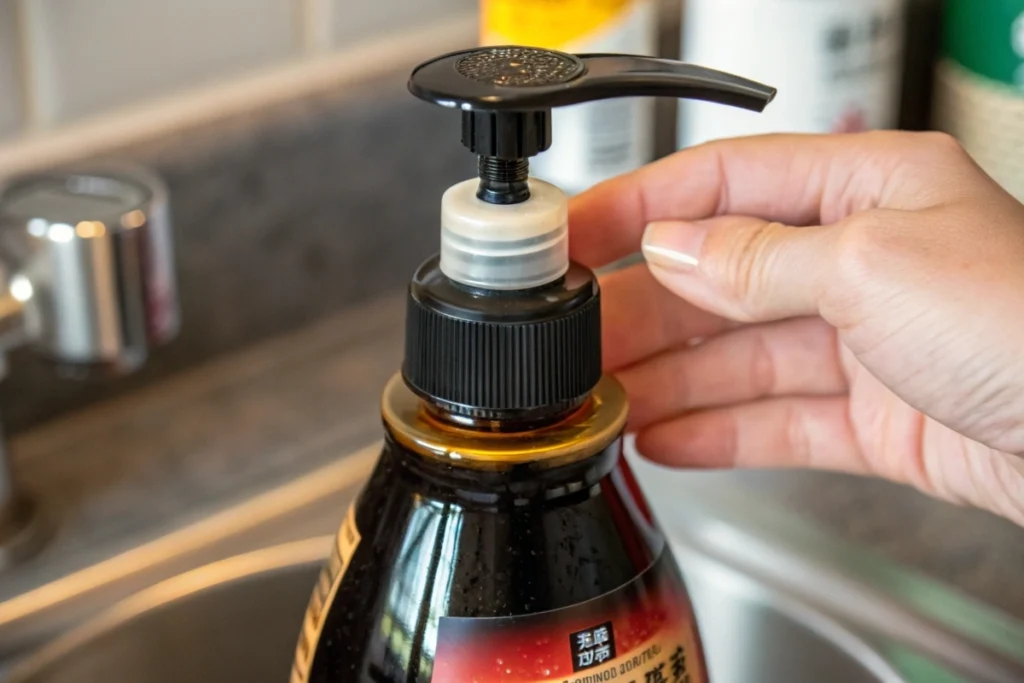
History of Japanese Fake Food Craft & How Shampoo Joined the Fray
Historically, japanese fake food shampoo might appear as a random extension of novelty culture. In reality, it’s part of a lineage tracing back to sampuru (food sample) artisans. By exploring that story, we see how an art form that began as a tool for restaurants evolved into everyday products—even personal care items.
The Early Days: Wax & Resin
In the early 20th century, Japan’s budding restaurant scene needed an eye-catching way to display menu offerings, especially as more Western-style eateries emerged. Artisans began hand-carving wax to simulate realistic noodles, soups, or vegetables. This wave of sampuru production overcame language barriers and enticed customers with visual previews.
Post-War Refinements
Following World War II, plastic and resin materials became more accessible, revolutionizing sampuru. Craftsmen honed techniques for painting glazes on “teriyaki” or capturing the translucent effect of ramen broth. Over decades, these replicas advanced in realism, making them globally admired for near-perfect detail.
Tourism & Souvenirs
As Japan attracted more tourists, fake food japanese items became hot souvenirs—mini keychains of sushi or ramen, plastic magnets featuring takoyaki, etc. Thus, the fake food market expanded beyond just restaurant displays to small consumer trinkets. By the 1980s and 1990s, novelty shops featured entire sections of fake food japanese items, capitalizing on the kawaii subculture.
Merging Functional Goods with Fake Food
Somewhere along the line, entrepreneurs realized that if you can replicate a plate of tonkatsu for a restaurant window, why not transform that same aesthetic into a playful household product? Early incarnations included fridge magnets, pencil cases, or phone straps shaped like onigiri. Over time, the concept extended to dispensers for soap or shampoo, recognizing the universal need for hygiene products and the global appetite for novelty.
Shampoo Emerges as a Fan Favorite
Certain Japanese novelty brands began producing shampoo bottles shaped like soy sauce containers or ramen bowls. Their popularity soared in Japan’s domestic gift shops, then spilled overseas through channels like eBay. As online marketplaces democratized global purchasing, fans abroad discovered these comedic yet functional items. Coupled with viral social media posts, japanese fake food shampoo cemented its place as a must-have for collectors or fans of Japanese pop culture.
The Future of Fake Food Products
As technology improves, we may see more integrated designs—maybe an LED-lit “lava lamp ramen” shampoo bottle or self-sculpting candy that changes shape in water. The creative spirit driving fake food artistry suggests there’s no limit to where the concept could go. By bridging tradition, utility, and whimsical design, japanese fake food shampoo stands as an emblem of evolving cultural artistry that resonates far beyond Japan’s borders.

Practical Examples/Use Cases of Japanese Fake Food Shampoo
The whimsical nature of japanese fake food shampoo naturally sparks creative applications. While it’s easy to assume these bottles function purely as gag gifts, below are scenarios showing their broader usability:
Gift-Giving & Party Favors
Someone throwing a housewarming or themed party might surprise guests with unique bathroom amenities: a ramen or sushi–themed shampoo dispenser. The host’s creativity leaves a memorable impression, turning a routine handwashing break into a mini conversation piece. For a fully immersive experience, you might set the table with real Japanese cuisine, referencing a what-is-miyabi-food-in-japanese guide that merges elegance with gastronomic artistry.
Hotel & Cafe Decor
Boutique hotels or modern cafes sometimes adopt edgy design elements to stand out. A coffee shop with an eclectic vibe might fill its restroom with these novelty shampoo or soap bottles, aligning with a Japanese pop-culture theme. A bed-and-breakfast near popular tourist spots could stock them to delight overseas guests, who appreciate the fun collision of practicality and playful design.
Educational Props & Museum Exhibits
In museum exhibits highlighting Japanese culture—like traveling expositions about sampuru or fake food japanese artistry—these shampoo bottles can serve as accessible examples of how tradition infiltrates everyday life. They show the continuity between classical wax modeling and modern uses, bridging historical context with present-day consumer products.
Retail Product Promotions
Brands occasionally partner with food manufacturers or anime series, unveiling limited-edition japanese fake food shampoo bottles shaped like a favorite character’s dish. This synergy fosters cross-promotions, especially in areas like anime conventions, where fans seek unique merchandise. The added exclusivity can drive up collector interest, turning these bottles into sought-after memorabilia.
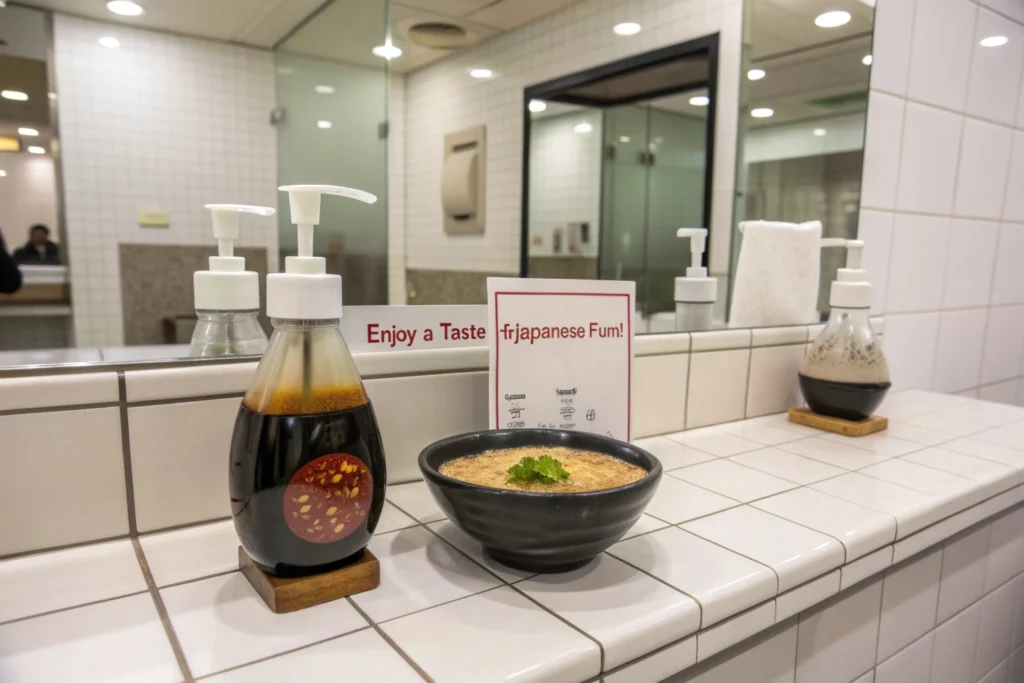
FAQs about Japanese Fake Food Shampoo
1. What is Japanese fake food called?
It’s commonly referred to as sampuru in Japan, meaning “sample.” Originally created for restaurant displays, these hyper-realistic replicas help visually explain menu items. Over time, the concept expanded into consumer products like japanese fake food shampoo or phone accessories.
2. What is the Japanese art of making fake food?
The art form involves molding wax, resin, or silicone to replicate actual dishes. Skilled artisans meticulously paint or sculpt components to achieve lifelike textures—steamy noodles, glistening sauces, or crispy tempura batter. This dedication to detail continues to influence novelty product design.
3. How is sampuru made?
Traditional sampuru typically starts with silicone or plastic molds. Artisans pour materials layer by layer, adding tints to mimic natural hues. Techniques may vary: some involve hand painting or airbrushing for realistic finishes, while others rely on premade molds for efficiency.
4. How are food replicas made?
The process involves shaping base forms (like a fish fillet or a swirl of noodles), then adding color and textural details. For mass-market items like fake food japanese soap dispensers or shampoo bottles, factories use advanced molds and automated coloring. Nonetheless, high-end or custom pieces often involve hands-on craftsmanship.
5. Where can I purchase them?
Platforms like eBay, Amazon, and specialized Japanese novelty stores sell these products. Physical retailers near tourist hotspots in Japan also carry them. Ensure you check authenticity and brand reputation to avoid low-quality knockoffs.
6. Is japanese fake food shampoo only for novelty?
While primarily novelty, many items are fully functional shampoo dispensers. Their quirky shapes enhance your bathroom’s decor, making them more than mere collectibles. They can also serve as amusing conversation starters when guests notice them.
7. Can fake food be found in places other than Japan?
Yes. Countries like the U.S. or regions in Europe with strong Japanese communities stock such novelties in anime shops or specialized import stores. Online markets further expand global accessibility. Some local craft fairs also feature homemade or “American fake japan food” adaptions, inspired by Japanese aesthetics.
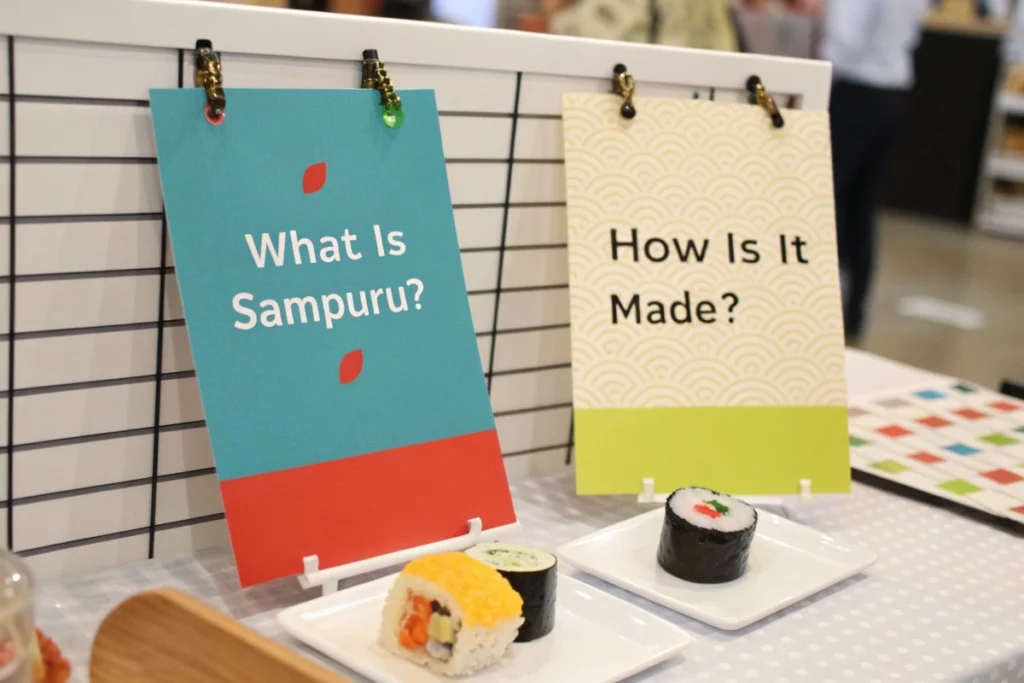
Conclusion
Japanese fake food shampoo is more than a passing fad. It blends a playful approach to packaging with Japan’s storied sampuru artistry, offering both novelty and cultural insight. Whether you’re a collector seeking unique conversation pieces or a fan of kawaii design, these bottles highlight the remarkable creativity that arises when everyday objects meet Japan’s obsession with detail. Beyond the comedic appeal lies a tribute to a long tradition of replicating dishes in precise, life-like form—only now, it’s moved from restaurant windows into our bathrooms.
The next time you’re scrolling online, consider adding a bottle shaped like ramen or a sushi roll to your cart. You’ll appreciate how mundane tasks like washing your hair can become a small moment of joy, fueled by fake food japanese flair. For more on Japan’s captivating mix of artistry and cuisine, explore where-else-can-fake-japanese-food-be-found for an expanded look at how these replicas appear in global contexts. After all, life’s too short not to enjoy a bit of playful design—and a “miso soup” shampoo bottle might be just the conversation starter you never knew you needed.
